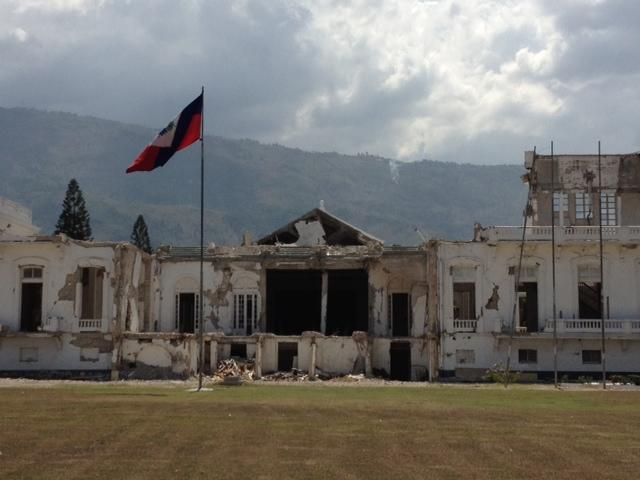Return to Haiti: A day in the life of a broken island
PORT-AU-PRINCE – From the moment you land in Haiti, it is the resiliency of the place that strikes you.
In the early morning light of the first day here, students in crisp uniforms marched like small armies to school, laborers sipped coffee in plastic cups from ubiquitous roadside stands known as ‘chen jambe,’ (Creole slang that translates as “dog crossings"), and the city streets were jammed with the impatient traffic of a country struggling to get back on the road to recovery.
The rubble has been largely cleared. To be precise, nearly 50 percent of the 10 million cubic meters of total rubble from the earthquake has been removed, according to official government estimates. Enough, at least, that the huge slabs of broken concrete and collapsed walls no longer block the streets.
More than two years after the earthquake, there is no doubt Haiti is still struggling, but it would be inaccurate to paint a picture of a place that is as ravaged and desperate as it is too often portrayed when international media finally decide to come to do a story.
But as the morning light shifts to midday sun and we get into the first meetings, the fatigue reveals itself. The despair is always there in the shadows.
In the center of downtown, the National Palace still lies in ruins, its once grand architectural dome collapsed and its columns cracked and broken. The image seems like a still-life painting of the fierce destruction of the 7.0 magnitude earthquake of January 12, 2010 that killed, by the Haitian government’s estimate, 316,000 people and left more than 2 million displaced.
Just across the street is the ragged camp know as ‘Champs de Mars’ where a total of 28,000 people still live in tents and ramshackle shelters fastened out of tarpaulin stamped with the “USAID” insignia and the slogan “From the American People.”
This camp is part of a network of camps in Haiti that still hold 500,000 people who remain displaced. The people here endure the indignity, misery and the incredible boredom of the camps. The unemployment and underemployment rate in Haiti is upwards of 70 percent. Seventy-eight percent of the country’s 10 million total population lives on less than $2 a day, according to the World Bank.
![]() Carlos Jean Charles, 31, has been living in one of these tents in ‘Chan Mas’ since the quake flattened his home more than two years ago . Inside the six-by-six is a sheet of plywood with one blanket where he lives with his pregnant wife and two young children. There is a bible on the pillow.
Carlos Jean Charles, 31, has been living in one of these tents in ‘Chan Mas’ since the quake flattened his home more than two years ago . Inside the six-by-six is a sheet of plywood with one blanket where he lives with his pregnant wife and two young children. There is a bible on the pillow.
When asked how it was possible that he and so many others were still in these camps after a total of $12 billion in aid was donated by the international community to Haiti in the aftermath of the quake, he had a quick answer.
“The politicians steal the money. In our misery, they make money. That’s why we call them devils,” he said, as a small crowd of men trying to sell rags of clothing and cheap, acrylic paintings gathered around us.
Informed that the U.S. government does not give direct aid to the Haitian government for precisely that reason, he again responded without missing a beat:
“Yes, the money goes to the NGOs (non governmental organizations) but the government officials work at the NGOs. They find a way to steal it. One way or another.”
I am here in Haiti with GlobalPost correspondent Jacob Kushner to build a team of young Haitian and American journalists who will be working together on a GlobalPost ‘Special Report’ that is exploring the question: Where did the money go?
You can read the first part of the Ford Foundation-funded continuing series at “Fault Line: Aid, Politics and Blame in Post-Quake Haiti.”
![]()
The story you just read is accessible and free to all because thousands of listeners and readers contribute to our nonprofit newsroom. We go deep to bring you the human-centered international reporting that you know you can trust. To do this work and to do it well, we rely on the support of our listeners. If you appreciated our coverage this year, if there was a story that made you pause or a song that moved you, would you consider making a gift to sustain our work through 2024 and beyond?
